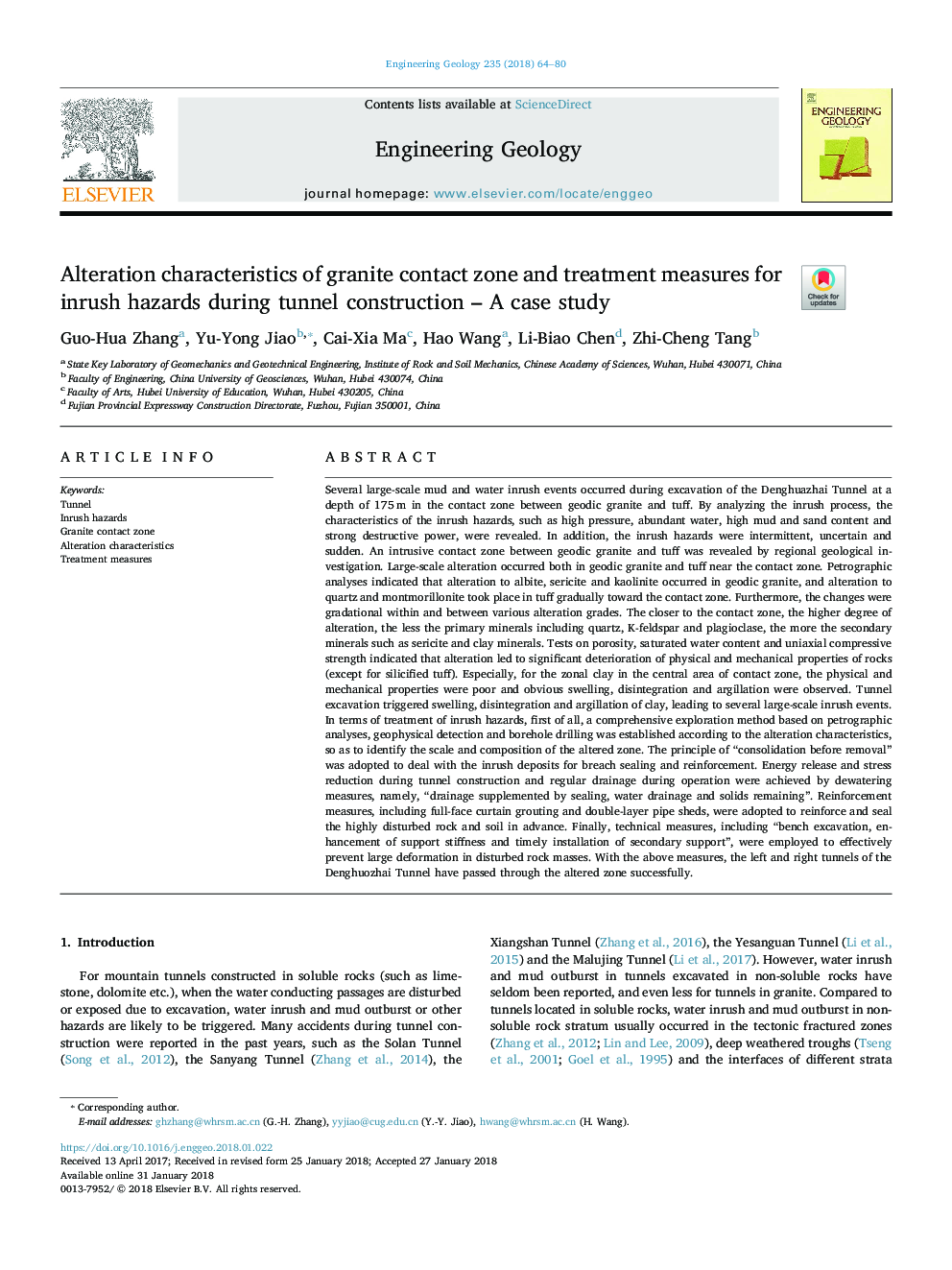| کد مقاله | کد نشریه | سال انتشار | مقاله انگلیسی | نسخه تمام متن |
|---|---|---|---|---|
| 8915949 | 1641750 | 2018 | 17 صفحه PDF | دانلود رایگان |
عنوان انگلیسی مقاله ISI
Alteration characteristics of granite contact zone and treatment measures for inrush hazards during tunnel construction - A case study
ترجمه فارسی عنوان
خصوصیات تغییرات منطقه تماس گرانیت و اقدامات درمان برای خطرات ناشی از زلزله در هنگام ساخت تونل - مطالعه موردی
دانلود مقاله + سفارش ترجمه
دانلود مقاله ISI انگلیسی
رایگان برای ایرانیان
کلمات کلیدی
تونل، مخاطرات منفجره، منطقه تماس گرانیت، مشخصات تغییر اقدامات درمان،
موضوعات مرتبط
مهندسی و علوم پایه
علوم زمین و سیارات
مهندسی ژئوتکنیک و زمین شناسی مهندسی
چکیده انگلیسی
Several large-scale mud and water inrush events occurred during excavation of the Denghuazhai Tunnel at a depth of 175â¯m in the contact zone between geodic granite and tuff. By analyzing the inrush process, the characteristics of the inrush hazards, such as high pressure, abundant water, high mud and sand content and strong destructive power, were revealed. In addition, the inrush hazards were intermittent, uncertain and sudden. An intrusive contact zone between geodic granite and tuff was revealed by regional geological investigation. Large-scale alteration occurred both in geodic granite and tuff near the contact zone. Petrographic analyses indicated that alteration to albite, sericite and kaolinite occurred in geodic granite, and alteration to quartz and montmorillonite took place in tuff gradually toward the contact zone. Furthermore, the changes were gradational within and between various alteration grades. The closer to the contact zone, the higher degree of alteration, the less the primary minerals including quartz, K-feldspar and plagioclase, the more the secondary minerals such as sericite and clay minerals. Tests on porosity, saturated water content and uniaxial compressive strength indicated that alteration led to significant deterioration of physical and mechanical properties of rocks (except for silicified tuff). Especially, for the zonal clay in the central area of contact zone, the physical and mechanical properties were poor and obvious swelling, disintegration and argillation were observed. Tunnel excavation triggered swelling, disintegration and argillation of clay, leading to several large-scale inrush events. In terms of treatment of inrush hazards, first of all, a comprehensive exploration method based on petrographic analyses, geophysical detection and borehole drilling was established according to the alteration characteristics, so as to identify the scale and composition of the altered zone. The principle of “consolidation before removal” was adopted to deal with the inrush deposits for breach sealing and reinforcement. Energy release and stress reduction during tunnel construction and regular drainage during operation were achieved by dewatering measures, namely, “drainage supplemented by sealing, water drainage and solids remaining”. Reinforcement measures, including full-face curtain grouting and double-layer pipe sheds, were adopted to reinforce and seal the highly disturbed rock and soil in advance. Finally, technical measures, including “bench excavation, enhancement of support stiffness and timely installation of secondary support”, were employed to effectively prevent large deformation in disturbed rock masses. With the above measures, the left and right tunnels of the Denghuozhai Tunnel have passed through the altered zone successfully.
ناشر
Database: Elsevier - ScienceDirect (ساینس دایرکت)
Journal: Engineering Geology - Volume 235, 9 March 2018, Pages 64-80
Journal: Engineering Geology - Volume 235, 9 March 2018, Pages 64-80
نویسندگان
Guo-Hua Zhang, Yu-Yong Jiao, Cai-Xia Ma, Hao Wang, Li-Biao Chen, Zhi-Cheng Tang,
